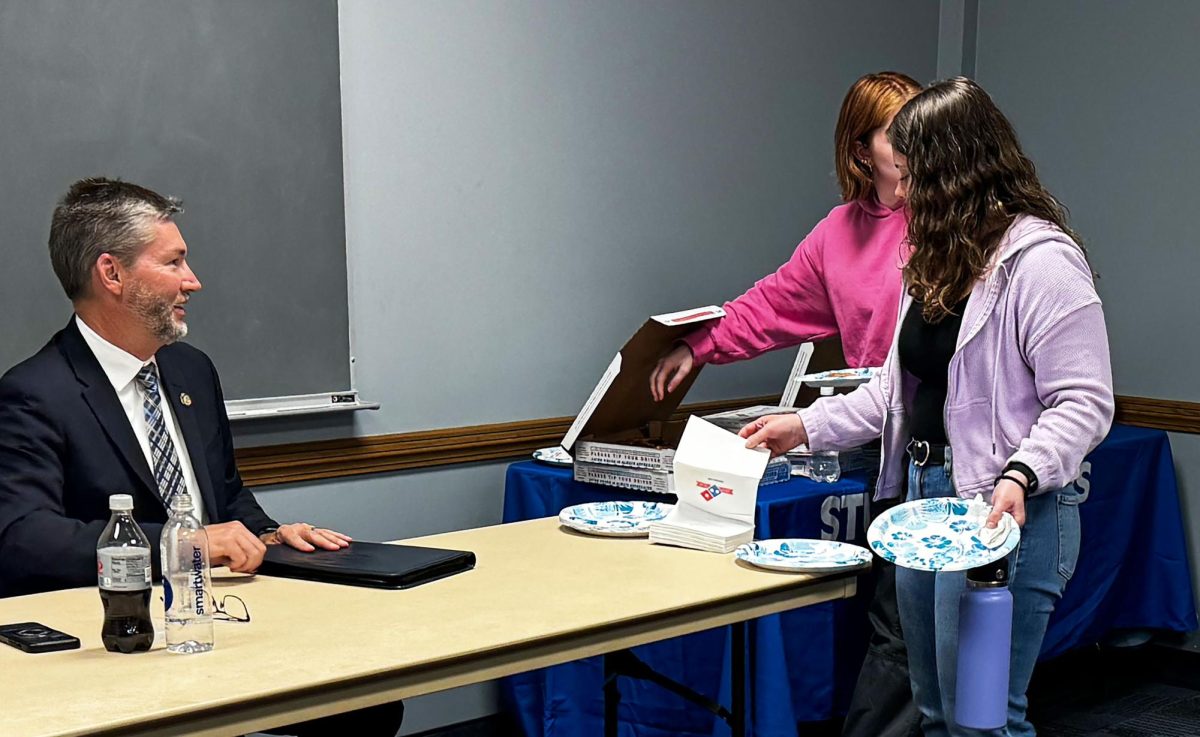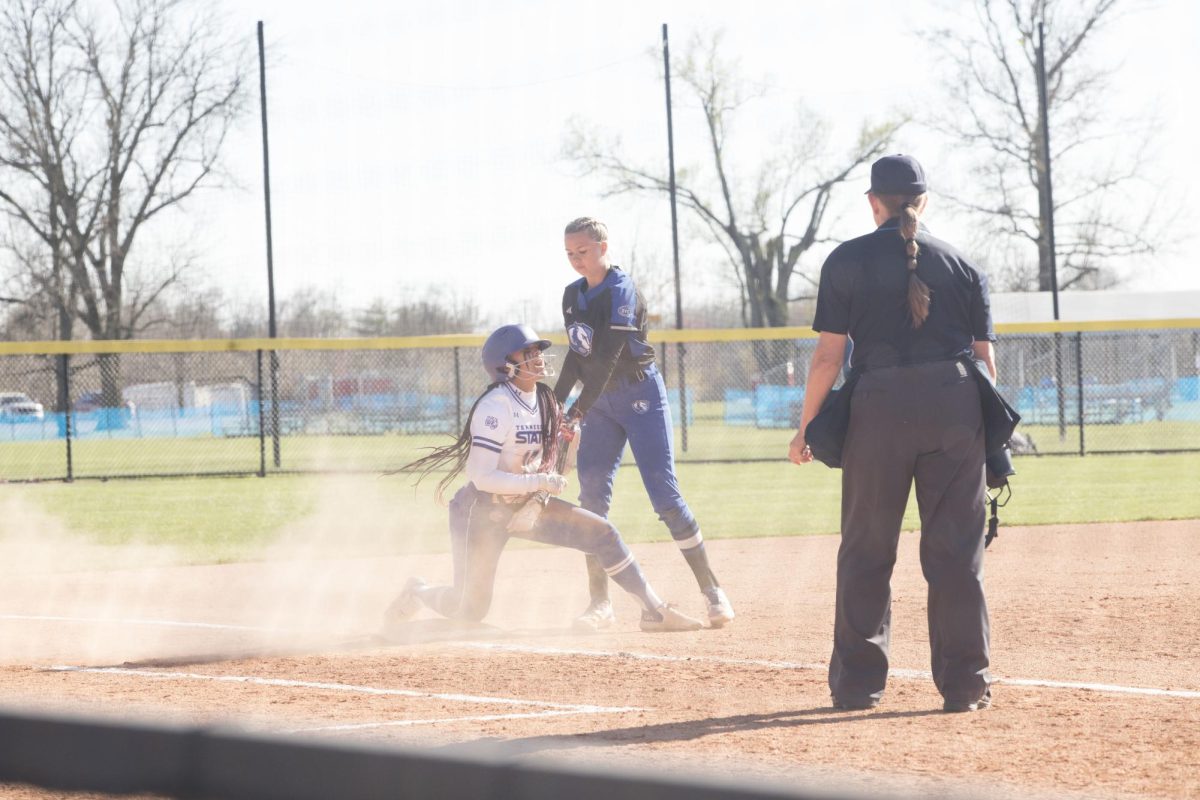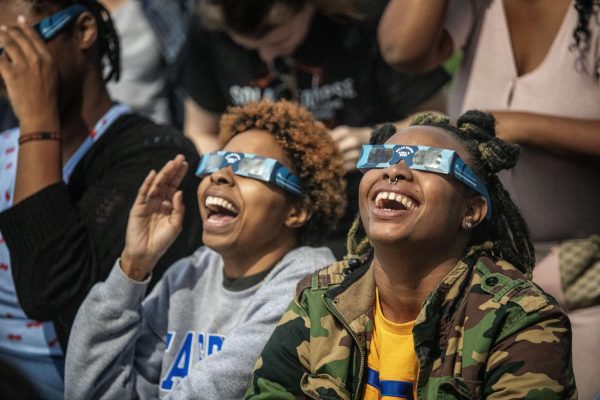Home away from home-cookin’
Jennifer Waldroup, a senior elementary education major, begins her day by eating a pop tart and a Dr. Pepper. In between classes she gets some cookies and a cherry Pepsi from the machines for a snack. For lunch she has a Luncheable or a Hot Pocket and for dinner she treats herself to a frozen pizza.
Sounds like the typical college diet, right? Well, it very well may be, but dietitian and family and consumer science instructor, Kristina Adams said a few changes could be made to make Waldroup eat a little more healthy.
The main problem, Adams said, is that Waldroup completely omits fruits and vegetables from her diet, foods that are essential to college age students.
Adams said students should really make an effort to add fruits and vegetables to our diets. Too often we go for the meals that are easy to fix, easy to clean up and easy on our pocket books.
The foods college students are notorious for eating, Adams said, are high-fat, high calorie foods. Right now, eating those high fat foods isn’t really hurting students too bad, but by eating these foods we fall into an eating habit that can be hurtful later in life. In college, students are very active and burn off most of the calories that they eat. However, most adults become less active as they get older and have a harder time burning off the calories, Adams said.
“When you become accustomed to a diet, it’s very hard to change,” Adams said.
The nutrient that Adams said students don’t get enough of is calcium. “We need a lot of calcium,” she said. “If we don’t get enough (calcium) when we’re younger, it can come back to haunt us when we get older.
Fruits, vegetables, dairy products like milk, cheese and yogurt and whole grains provide calcium and other nutrients that we need. Adams said if students ate more of these foods their overall performance would be better because they’re healthier.
As for our typical college student, Waldroup, Adams said she could improve her breakfast meal by substituting her Pop-Tart with a couple of waffles. She could also incorporate fruits and vegetables into her diet by adding some fresh fruit or some yogurt. Nutri grain bars are also good for breakfast as long as they’re “whole grain,”
Adams said. Adams said she could also trade in the Pop-Tart for slices of whole grain bread with some low sugar jam. The Dr. Pepper, Adams said, needs to be thrown out and replaced with some orange juice, water or milk. However, if she really needs the caffeine to get going, she can keep the Dr. Pepper or coffee in her diet. However, that’s it for the day. The rest of her beverages should be water or juice.
For lunch, Adams said Waldroup needs to say adios to the Lunchable. Lunchables have little nutritional value, Adams said, but, the Hot Pockets (as long as they’re Lean Pockets) provide more nutritional value.
A better meal, however, would be a sandwich. Any kind of lunch meat with whole grain bread is better, Adams said. To compliment the sandwich, she could have vegetables like celery or carrots, or an individual cup of applesauce or pudding. “Another quick lunch or dinner idea is canned soup,” she said.
For dinner, Adams again would suggest adding more fruits and vegetables. Many times, students have more time to spend on dinner, so instead of the frozen pizza, Adams suggests making pasta and adding fresh vegetables. Most grocery stores sell flavored pastas. Adams suggests omiting the oil in the recipe and just mix the pasta and seasonings. Then add the fresh vegetables.
Another quick and healthy idea is to sautee vegetables and diced chicken or beef. Adams said students can buy package seasonings such as Teriyaki or stir-fry to mix in with their meat and vegetables to give it flavor.
During the day, Adams said she would substitute Waldroup’s cookies and Cherry Pepsi with a more healthy bag of pretzels or animal crackers. Other snack ideas include apples, bananas and popcorn. Adams said frozen fruit is also a good snack. Because the fruit is frozen, the sugar is more concentrated so the fruit tastes sweeter.
Adams said when shopping students should look for foods that are low or reduced fat.
“(Reduced fat foods) have come a long way,” Adams said.
Most reduced fat or low fat foods are just “watered down” and basically have the same flavor.
Adams also encouraged students to try different brands. “If one (brand) tastes bad, it doesn’t mean they’re all going to taste bad,” she said. “Look for healthy and convenient foods. There are a lot of foods students would value from if they looked harder in stores.”












































